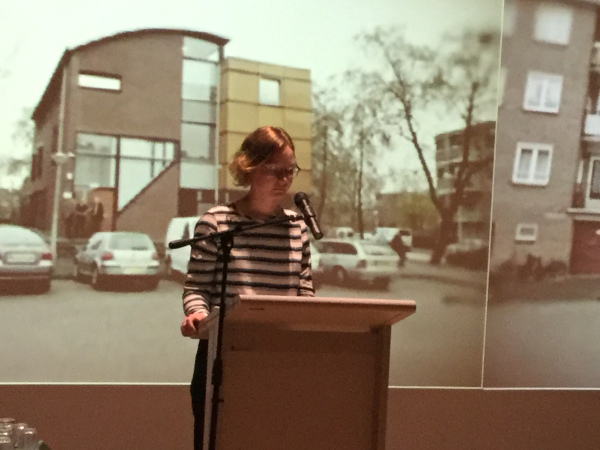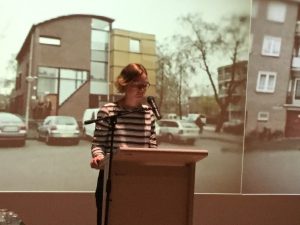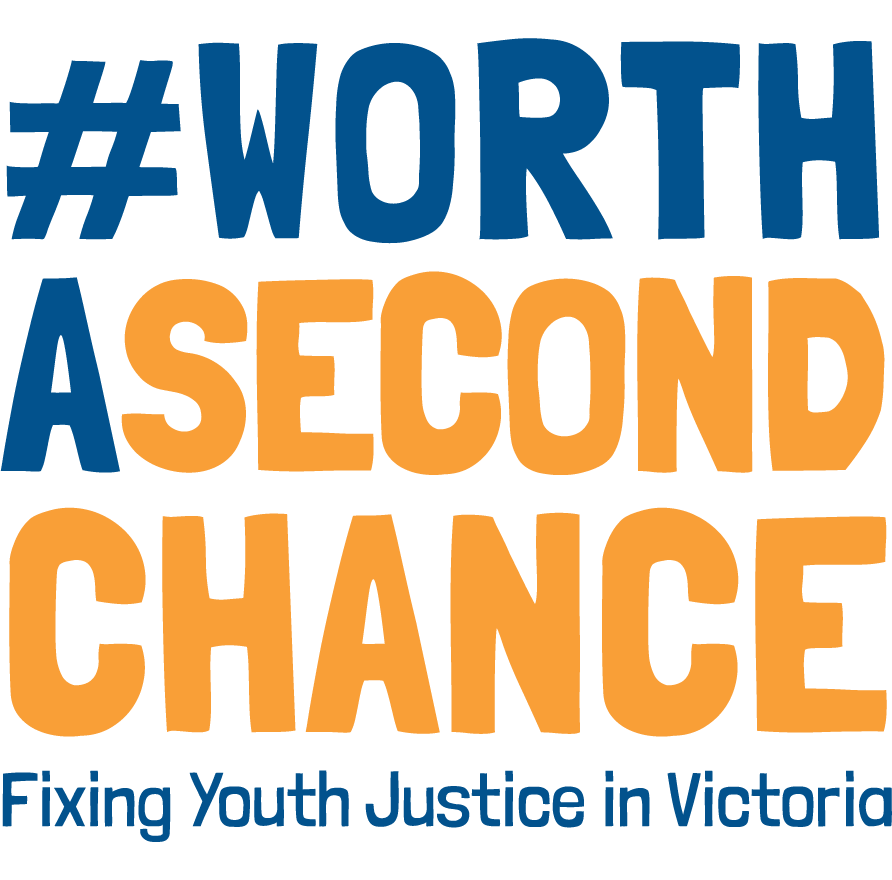
15 Feb Local Time: Working towards small-scale local facilities for justice-involved young people
By Dr Sanne Oostermeijer
Research fellow at the School of Population and Global Health, University of Melbourne and co-creator of Local Time.
When the National Gallery of Victoria and VicHealth announced the inaugural Victorian Design Challenge (VDC) with the question: ‘How might we increase the resilience of today’s young people’, it seemed to be speaking directly to me about the state of youth justice in Victoria.

Dr Sanne Oostermeijer presenting at the Justice for Young People network launch in 2018.
During 2017 I had moved to Melbourne, after working on a project in the Netherlands exploring new forms of youth justice, which included three pilot sites for small-scale local justice facilities. Each facility explored this concept in its own way, however all three shared particular key elements: they were small-scale(max. 8 young people); local, that is, in close proximity to the young person’s family and community; and were focussed on relational securityand maintaining positive elements in the lives of the young people.
Working with its key stakeholders, including the young people within the facilities, was inspiring. Everyone within these spaces seemed to have one goal in heart and mind: how can we empower these young people to create and maintain positive changes in their lives?
The experience of seeing these facilities in operation left a deep impression; I had seen that such an evidence-based policy change was possible, and that it had positive effects on both the young people and people working in the field.
In the weeks after moving to Melbourne however, I saw a different approach being advocated by media and politicians; a ‘tough on crime’ approach. This was frustrating to me, since evidence is lacking for either the ‘youth crime problem’ or the effectiveness of such a punitive approach. This was the exact opposite of the positive changes I had seen and experienced in the Netherlands.
I felt this issue pressing upon me at the time the VDC was announced, seeking design ideas to increase resilience and wellbeing in young Victorians.
The current evidence on ‘what works’ in youth justice translates closely to the idea of ‘building resilience’, so with my partner Matt (who is an architectural graduate), I began to look at how resilience could be embedded through the design of facilities for justice-involved young people.
We presented our work in June 2018, proposing the development of a design standard for small-scale, semi-open, local facilities as an alternative to high-security detention. The design standard would detail explicitly how the architecture of a facility can promote prosocial resilience and wellbeing within the justice system, based upon international research and precedents.
Our project, Local Time, was announced the winner of the 2018 VDC and we are now actively working towards changing the Justice system in Victoria.
Through its design, a youth justice facility embodies the ideas of the system which builds it. This in turn affects the way that services and programs can be provided within that space.
For example; if social connection is a key principle of rehabilitation, then the facility itself should be sited within or close to the youth’s community. Designing the facility on a site outside the community creates physical and psychological barriers to inclusion, and severely limits the young person’s ability to participate in the community in ways that build social connection.
We believe that we can take the first step to implementing a positive architectural model in the Victorian youth justice system by precisely articulating the key principles and requirements for small-scale local facilities, and that this can promote genuinely positive changes in the lives of justice-involved young people.
Ultimately, we hope our project will form one part of a broader reform based on the principles of justice reinvestment: re-allocating money from prisons towards communities – with a place-based, community-driven approach.
Our project proposal can be found here.
This blog post was originally published on the Justice-Involved Young People Network blog page – you can find the original post here. The Justice-Involved Young People Network and Dr Sanne Oostermeijer have provided permission for us to use this post.
